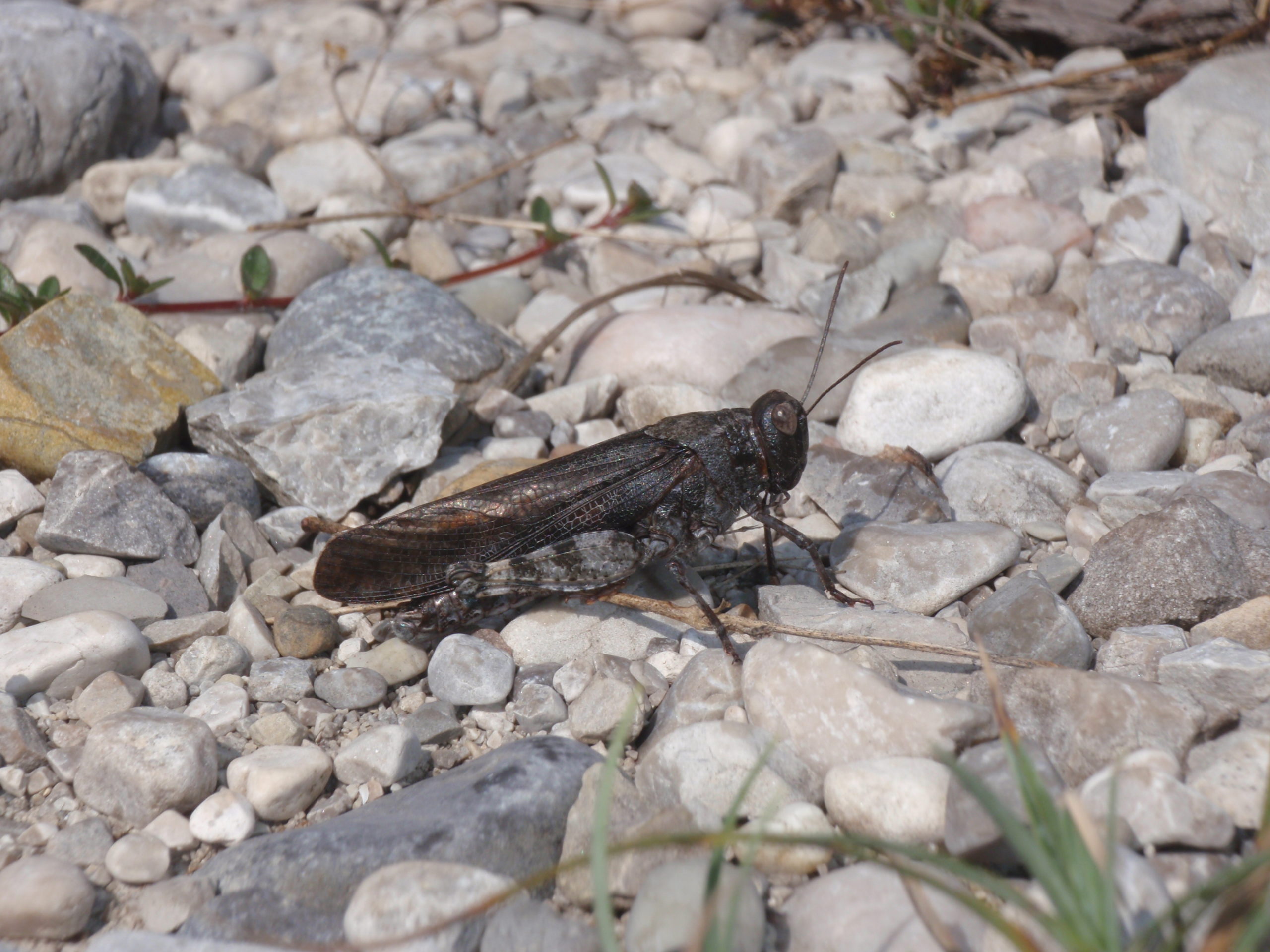Can there be a comeback for one of Central Europe’s rarest insect species?

© Oliver Hawlitschek
The speckled buzzing grasshopper is extinct throughout most of Central Europe. Researchers of the Hamburg branch of the Leibniz-Institute for the Analysis of Biodiversity Change investigated the reasons for the decline of this rare species. They found that this grasshopper is resilient to the effects of global warming, and that targeted conservation efforts to preserve and restore their habitats might allow for a recovery of the populations.
The speckled buzzing grasshopper counts among Central Europe’s most remarkable grasshoppers: attaining a stately size of four centimeters, it is furthermore distinguished by the bright red color of its hindwings and the characteristic buzzing noise it makes while flying. While still common across many parts of Asia, this species is highly threatened in Central Europe. The study was published in the journal Biodiversity and Conservation.
Lara-Sophie Dey, graduate student at the University of Hamburg and head of the study, analyzed 380 objects that she collected personally or that had been deposited in natural history museums of Europe and Asia over the last 150 years. She says: “The speckled buzzing grasshopper was widespread across Central Europe in the past, but most populations went extinct during the last 100 years.” The species was common in Germany, Poland, and countries around the Alps. There were also populations in Denmark, Sweden, and the Baltic States. It has now disappeared from most of this range.
Today, the last Central and Northern European refugia of the speckled buzzing grasshopper are the Swedish island of Øland, a military area in Lithuania, and the rivers Isar and Lech of the Alps. The alpine sites represent some of the last remaining natural river courses of Central Europe. Their extensive gravel banks are unique habitats that are threatened by the impact of hydroelectric dams on the flooding regime, says Oliver Hawlitschek, head of the molecular genetic lab at the Leibniz-Institute for the Analysis of Biodiversity Change (LIB), Hamburg. He explains: “The reduced discharge alters the natural dynamics of the river and allows vegetation to grow on the open gravel banks. We are in danger of losing these unique habitats.”
But: Could the decline of the speckled buzzing grasshopper also be caused by global warming? To study this, the scientists calculated computational models of the grasshopper’s ecological niche. If climate change was the main reason for the decline, they hypothesized, localized protection measures for individual populations would not be very efficient.
Their results show: All Central European sites at which populations of the speckled buzzing grasshopper were extinct were near the climatic optimum of this species. In Asia, some populations live under much poorer climatic conditions. Martin Husemann, grasshopper expert and curator of insects at the LIB, explains: “We found that the destruction of habitats was the reason for the extinction of all individual populations. Consequently, specific local conservation measures remain highly important for this species, also in times of global climate change.”
More good news: The scientists found that some former habitats of the speckled buzzing grasshopper have now returned to the original state thanks to dedicated habitat restoration measures. This gives them some hope that this grasshopper, now one of Central Europe’s rarest insect species, may one day return.
Contact:
Lara-Sophie Dey
Leibniz-Instituts zur Analyse des Biodiversitätswandels (LIB)
Zoologisches Museum Hamburg
Martin-Luther-King-Platz 3
20143 Hamburg
lara-sophie.dey@uni-hamburg.de
+4915786350340
Dr. Oliver Hawlitschek
Leibniz-Instituts zur Analyse des Biodiversitätswandels (LIB)
Zoologisches Museum Hamburg
Martin-Luther-King-Platz 3
20143 Hamburg
oliver.hawlitschek@uni-hamburg.de
+491709036994


